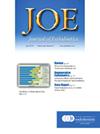Anesthetic Effectiveness of Mental/Incisive Nerve Block versus Inferior Alveolar Nerve Block in Mandibular First and Second Premolars with Symptomatic Irreversible Pulpitis: A Randomized Clinical Trial
IF 3.5
2区 医学
Q1 DENTISTRY, ORAL SURGERY & MEDICINE
引用次数: 0
Abstract
Introduction
This study aimed to compare the effectiveness of mental/incisive nerve block (MINB) and conventional inferior alveolar nerve block (IANB) anesthesia during endodontic treatment of mandibular first and second premolars with symptomatic irreversible pulpitis.
Methods
In this randomized, double-blind, clinical trial, 120 patients undergoing endodontic treatment of mandibular premolars were randomly assigned to IANB (n = 60) or MINB (n = 60) using 1.8 mL 4% articaine with 1:100,000 epinephrine hydrochloride. Pain levels were evaluated preoperatively and during cold tests, cavity preparation, and pulp extirpation using the Numerical Rating Scale. Statistical analyses included the independent t test, chi-square test, and Mann-Whitney U test (α = 0.05).
Results
Both groups showed a success rate of 70% for anesthesia (P = 1.000). While IANB demonstrated similar efficacy between first (71.4%) and second (68.8%) premolars (P > .05), MINB was significantly more effective for first premolars (76.9%) than second premolars (64.7%) (P < .05).
Conclusions
MINB and IANB provide comparable pain control for mandibular premolars during endodontic procedures. However, MINB was observed to be less effective for second premolars compared to first premolars. The study suggests that, despite the comparable success rates of both anesthesia techniques, supplemental anesthesia may still be required to achieve adequate pain management for mandibular premolars with symptomatic irreversible pulpitis.
精神/切口神经阻滞与下牙槽神经阻滞对下颌第一和第二前磨牙症状不可逆性牙髓炎的麻醉效果:一项随机临床试验。
摘要:本研究旨在比较精神神经阻滞(MINB)和常规下牙槽神经阻滞(IANB)麻醉在治疗症状性不可逆性牙髓炎(SIP)的下颌第一、第二前磨牙根管治疗中的效果。方法:在这项随机、双盲的临床试验中,120例接受下颌前磨牙根管治疗的患者随机分为IANB组(n=60)和MINB组(n=60),分别使用4%阿替卡因和1:10万盐酸肾上腺素。采用数值评定量表(NRS)评估术前、冷试验、空腔准备和拔牙期间的疼痛水平。统计学分析采用独立t检验、卡方检验和Mann-Whitney U检验(α=0.05)。结果:两组麻醉成功率均为70% (P = 1.000)。IANB对第一前磨牙(71.4%)和第二前磨牙(68.8%)的疗效相似(P< 0.05),而MINB对第一前磨牙(76.9%)的疗效明显高于第二前磨牙(64.7%)(P< 0.05)。结论:在根管治疗过程中,MINB和IANB对下颌前磨牙的疼痛控制效果相当。然而,MINB对第二前磨牙的治疗效果不如第一前磨牙。该研究表明,尽管两种麻醉技术的成功率相当,但仍然需要补充麻醉来实现对下颌前磨牙的充分疼痛管理。
本文章由计算机程序翻译,如有差异,请以英文原文为准。
求助全文
约1分钟内获得全文
求助全文
来源期刊

Journal of endodontics
医学-牙科与口腔外科
CiteScore
8.80
自引率
9.50%
发文量
224
审稿时长
42 days
期刊介绍:
The Journal of Endodontics, the official journal of the American Association of Endodontists, publishes scientific articles, case reports and comparison studies evaluating materials and methods of pulp conservation and endodontic treatment. Endodontists and general dentists can learn about new concepts in root canal treatment and the latest advances in techniques and instrumentation in the one journal that helps them keep pace with rapid changes in this field.
 求助内容:
求助内容: 应助结果提醒方式:
应助结果提醒方式:


